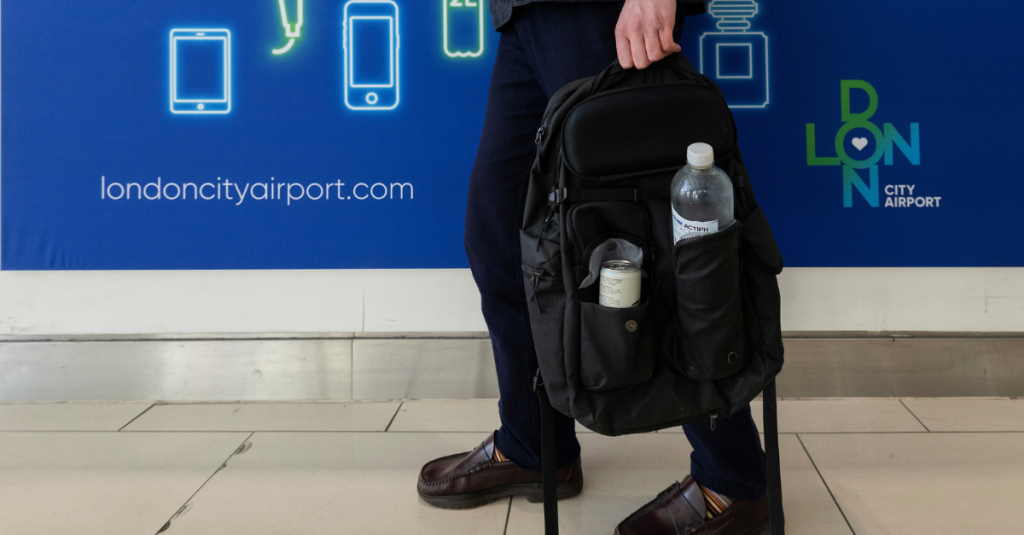The unexpected reimplementation of hand luggage liquid restrictions in UK airports has sparked passenger confusion.
Announced by the Department for Transport, the sudden policy shift affects a select group of airports, raising concerns over communication and efficiency in aviation security.
Government’s Sudden Policy Revision
The abrupt reinstatement of hand luggage liquid restrictions at UK airports has caused widespread confusion. Announced by the Department for Transport, this policy change affects passengers departing from six regional airports with Next Generation Security Checkpoints (NGSC).
Despite efforts to install new scanners that allow for up to two litres of liquids, the decision to revert to the 100ml limit was made to refine these new systems further. The DfT has assured travellers that the scope of this change is limited, impacting only around 6% of UK air passengers.
Impact on Passengers and Airports
Passengers are understandably perplexed by these fluctuating liquid rules. Rory Boland, a travel editor at Which?, highlighted the potential for increased confusion and delays during peak travel periods. This uncertainty might deter individuals from planning their travels.
Airports like Birmingham have voiced concerns over the temporary measure. Initially designed to handle increased liquid capacities with new security installations, these airports now face logistical challenges. Extended queues, documented on social media, have become a common sight.
Reasons Behind the Restriction Reimplementation
The Department for Transport has labelled the reintroduction of the 100ml restriction a ‘routine measure.’
This decision is not tied to any specific threats but rather aims at improving new checkpoint systems’ efficiency. Although regional airports operating NGSCs are primarily affected, it raises questions about the readiness of other airports to transition fully to new security measures.
An extension for implementing high-tech scanners until next year was recently granted, acknowledging the complexity of installations.
Airport Responses to Security Challenges
Birmingham airport stands as an example of the operational issues stemming from this policy shift. Its chief executive, Nick Barton, expressed concerns about prolonged queue times due to the re-imposed 100ml liquid restriction that hampers the use of their advanced equipment.
The airport initially prepared to accommodate the two-litre allowance, but with the reimposition, they face unexpected logistical burdens. This scenario exemplifies the gaps between policy shifts and ground-level implementation.
As the summer travel season peaks, airports must navigate these challenges, balancing security with passenger convenience.
Expert Opinions on Security Protocol Adjustments
Industry experts, like Julia Lo Bue-Said of The Advantage Travel Partnership, stress the importance of clear communication between the government and airports. She emphasises the potential chaos of varying rules at different airports, which could lead to inconsistent passenger experiences.
Collaborative efforts are urged to ensure smooth transitions across all airports, minimising confusion.
In this intricate process, consistent and clear messaging remains crucial to maintaining traveller trust and security integrity.
Technological Advancements in Airport Security
The introduction of computed tomography (CT) scanners represents a significant leap in airport security technology. These revolutionary devices offer the capability to view 3D images of passengers’ belongings, promising a streamlined security experience.
The government’s initiative mandates the installation of CT scanners by a revised deadline, recognising the installation’s scale and complexity.
For many airports, this technology symbolises the future of aviation security, reducing the need for frequent policy changes.
Future Considerations for Airport Security Policies
As the landscape of airport security continues to evolve, authorities must prioritise stable, transparent policies to restore passenger confidence. Balancing technological advancements with regulatory changes will remain at the forefront of industry discussions.
Ultimately, ensuring that security enhancements do not compromise traveller convenience is paramount.
To navigate evolving airport security measures, a collaborative approach is essential. Clear communication and strategic adaptation to technological advancements will help ensure traveller satisfaction and safety.

